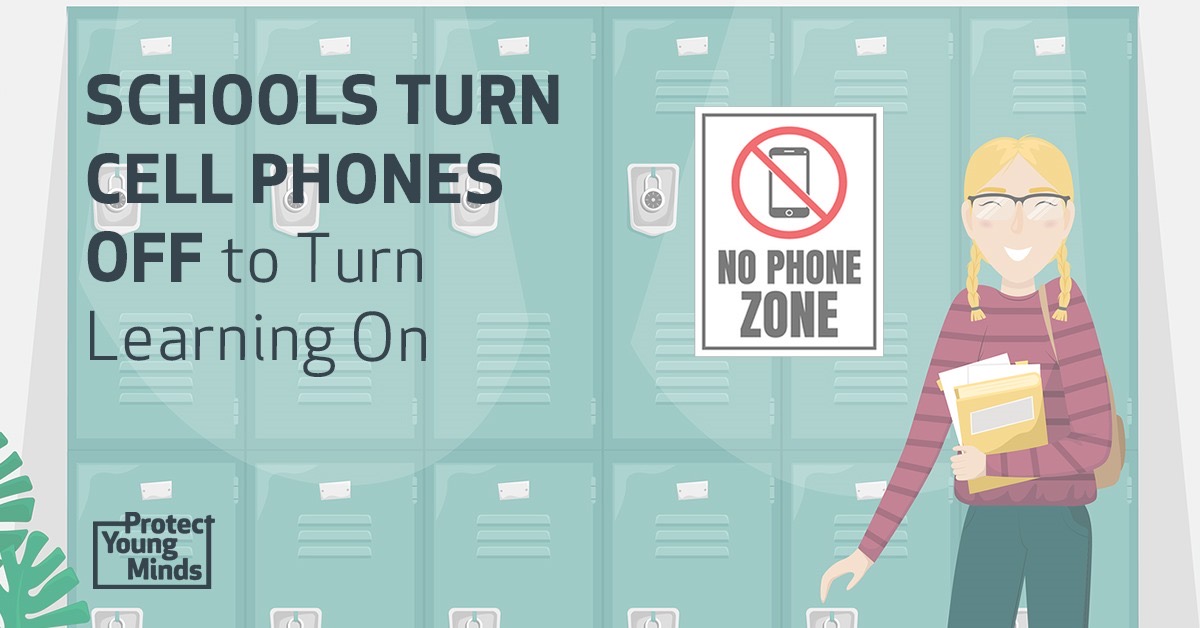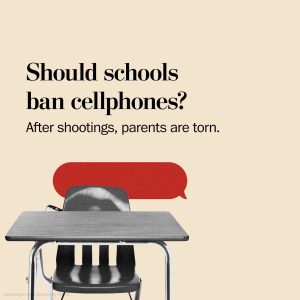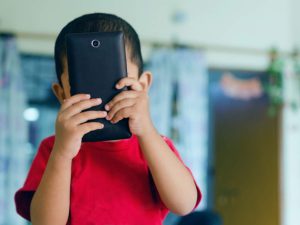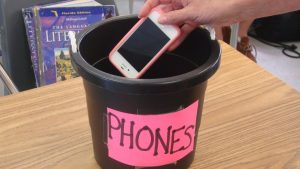Ban Cellphones From Schools? By Howard Bloom

Education Week reports that we are in a student mental health crisis. So does the surgeon general. Will taking cellphones away from kids while they’re in school help us get out of this crisis?
I asked the science search engine Consensus to do a survey of studies on school cellphone bans and mental health. Consensus reviewed ten scientific papers on the topic and came to the following conclusion: “Some studies suggest that school cellphone bans can improve student performance and reduce bullying.”

Bullying? How do you bully someone in class using your cellphone? Education Week hints that you pick on one kid, make fun of what he or she is wearing, take a picture of it, put the photo up on a social network, and give it a nasty caption.
Sometimes, what starts as bullying turns into a fight. And while the teacher is talking, kids on phones message each other and set a time and place to meet for a brawl.

But the fact is that bans on cellphone use in schools have been widespread for a very long time. And that has not prevented the student mental health crisis that we’re seeing today.
In 1989, Maryland was “one of the first states to ban cell phones in schools,” Maryland’s legislators apparently believed that kids were using two new technologies, pagers and cellphones, to set up drug deals.
Ten years later, The Columbine High School Massacre, in which twelve students and one teacher were killed, shocked the nation. Suddenly parents wanted to be in touch with their kids in case of emergency. These parents wanted their children to have cellphones in the classroom. So the cellphone bans were relaxed.
But after another ten years, 91% of America’s schools once again had bans on cellphones.

Then came the Covid pandemic and school lockdowns. When you were stuck at home, cellphones were salvation. They were the only way to get together with your friends.
But when kids returned to class after three years of learning at home, teachers found that their students were glued to their phones during class more than ever.
So now we’re in a new era of school cellphone bans. As of 2022, just two years ago, 77% of American schools had some form of cell phone ban. But that was not enough. In May, 2023, Florida was the first state to pass a law ordering all public schools to ban cellphones from classrooms. Indiana, Ohio, and Virginia followed suit.

And a few months from now, New York City and LA—the two biggest school districts in the country–will also ban cellphones in schools.
This new wave of cellphone bans is not just taking place in the United States. It’s happening in countries all over the world, including China, England, Italy, and France.
Even the United Nations is getting in on the act. In an official report it cites research that blames cellphones for poor grades and low test performance.
The bottom line is this. If we want students to learn from their teachers, we have to ban cellphones from the classroom.

But will giving kids seven hours a day without cellphones prevent bullying, stress, and depression?
We’ve had cellphone bans for 35 years. Yet as you know, we’re in the midst of what the surgeon general calls a mental health crisis.
Even worse, we are in the midst of wars in Ukraine, Sudan, and Gaza. Mental health crises, monstrous behaviors like bullying and school fights, and the most monstrous behavior of all, war, are part of human nature. They are part of what the great social thinker Hannah Arendt called the human condition.

And solving that condition is far bigger than just cellphones.
References:
Beneito, P., & Vicente-Chirivella, Ó. (2022). Banning mobile phones in schools: evidence from regional-level policies in Spain. Applied Economic Analysis.https://doi.org/10.1108/aea-05-2021-0112
Beland, L., & Murphy, R. (2016). Ill Communication: Technology, distraction & student performance. Labour Economics, 41, 61-76. https://doi.org/10.1016/J.LABECO.2016.04.004
Marciano, Laura, Anne-Linda Camerini, and Rosalba Morese. “The developing brain in the digital era: A scoping review of structural and functional correlates of screen time in adolescence.” Frontiers in psychology 12 (2021): 671817. https://www.frontiersin.org/journals/psychology/articles/10.3389/fpsyg.2021.671817/full
https://unesdoc.unesco.org/ark:/48223/pf0000385723/PDF/385723eng.pdf.multi.
|
https://slate.com/life/2024/06/phone-bans-schools-activism-shootings-parents-resistance.html
https://whyy.org/articles/delaware-district-middle-school-cell-phone-policy-lock-bags/
https://www.anxiousgeneration.com/about#team
https://www.cnbc.com/2024/07/17/a-smartphone-free-childhood-a-global-movement-is-growing.html
https://www.centerforonlinesafety.com/blog/do-any-countries-ban-smartphones-at-school
https://www.nationalbook.org/books/the-human-condition/
______
Howard Bloom of the Howard Bloom Institute has been called the Einstein, Newton, Darwin, and Freud of the 21st century by Britain’s Channel 4 TV. One of his eight books–Global Brain—was the subject of a symposium thrown by the Office of the Secretary of Defense including representatives from the State Department, the Energy Department, DARPA, IBM, and MIT. Bloom’s work has been published in The Washington Post, The Wall Street Journal, Wired, Psychology Today, and the Scientific American. He does news commentary at 1:06 am Eastern Time every Wednesday night on 545 radio stations on the highest-rated overnight syndicated talk radio show in North America, Coast to Coast AM. For more, see http://howardbloom.net.





